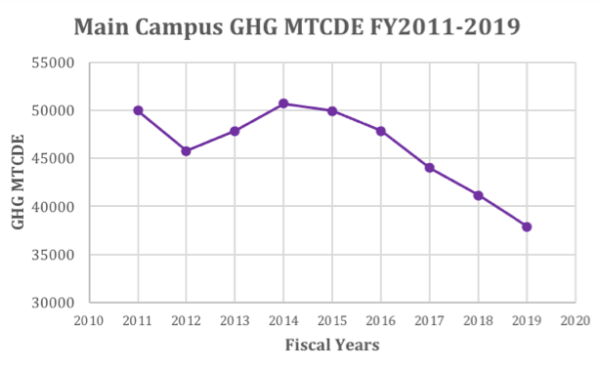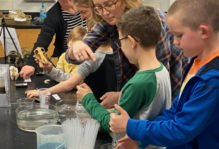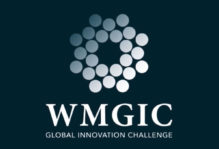Counting Carbon for Campus Sustainability
By Zoey Mondshine ’21
Sustainability is a priority at William & Mary and greenhouse gas reporting is pivotal to future change on campus. This spring, I worked alongside Madeline Bertagnolli ’22, a sustainability intern, to complete the W&M Greenhouse Gas (GHG) Inventory for Fiscal Year 2019. This included reporting on both W&M’s main campus and William & Mary’s Virginia Institute of Marine Science (VIMS). While I supported Madeline’s work on the long report, my main focus was to create three short reports, one for main campus, one for VIMS, and a combined report for both campuses. The purpose of these reports is to account for changes in reporting, student population, and the physical size of W&M. These short reports were designed to be more accessible and understandable to the student body and general public, in order to help the community understand what is going on, in regards to emissions, on campus.
For the three short reports, I analyzed the 2019 data collected, created graphs, and looked for the data that would be most understandable, with the biggest impact, for the reader. It can often be hard to understand the importance of climate reporting without much environmental background, but it is necessary for the rest of the community to have some information in order for the most change possible to occur. After deciding which data this included, I created three pages for each short report of important information on greenhouse gas emissions at W&M. The reports include emissions data as well as information on what W&M is working on in terms of climate action.

Greenhouse Gas Emissions of William & Mary’s main campus over the past nine years. From 2018 to 2019, main campus overall emissions decreased 7.9%
In the fall of 2019, William & Mary and the University of Virginia announced their collaborative plan to be carbon neutral by 2030. The universities will work together to reach their goal of zero net greenhouse emissions. This is part of larger efforts made in Virginia, under governor Ralph Northam’s executive order, to attain 100% of its energy from carbon-free sources by 2050.
Carbon neutrality for the university will cover emissions W&M can directly control – Scopes 1 and 2. Scopes 1 and 2 include on-campus fuel, funded transportation, fertilizer, and electrical usage. Scope 3 includes emissions from sources the university cannot directly control, such as commuting, study abroad, and waste. William & Mary is working to reduce emissions from these sources wherever possible through encouraging greener transportation on campus as well as the creation of a Study Abroad Green Travel Guide.
Another exciting announcement from W&M is that the university has agreed to purchase 50% of its electricity from renewable energy sources by 2020, specifically from solar panels. Upon successful completion of a large solar energy farm, W&M will be sourcing the highest percentage of renewable energy of the public universities in Virginia.
In addition, William & Mary has a finalized draft of the Climate Action Plan goals and looked for feedback on these this past Spring semester. Check out the drafted goals! These will be finalized in the near future and will serve as the basis for sustainable forward change on campus.
Our findings indicate that overall GHG emissions from W&M’s campus have decreased through the years. While the campus has been able to grow in size, with more students and larger square footage, the university has continued to decrease its emissions and is able to produce a smaller percentage of emissions per student and square footage of the university.
While W&M has been conducting greenhouse gas reports since 2011, methods for reporting and data collection have improved over the years. After finalizing the reports, Madeline and I worked to improve the framework for data collection and analysis in the future. We used this framework to begin collecting data for FY 2020 and hope it will be beneficial to future students’ contributions to sustainability at William & Mary.




No comments.
Comments are currently closed. Comments are closed on all posts older than one year, and for those in our archive.